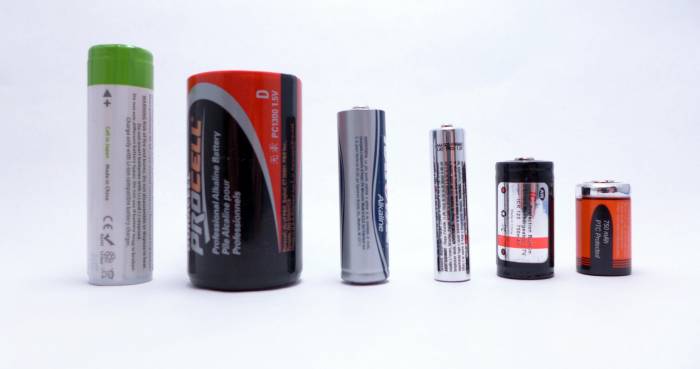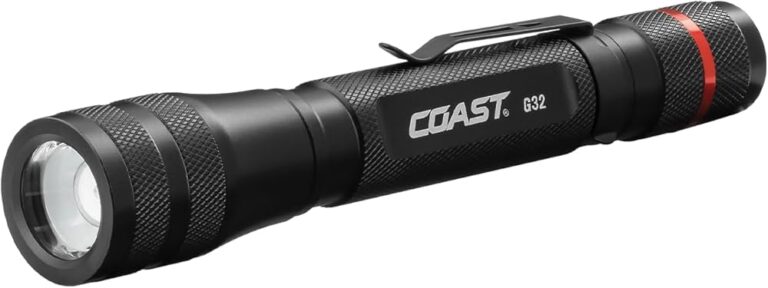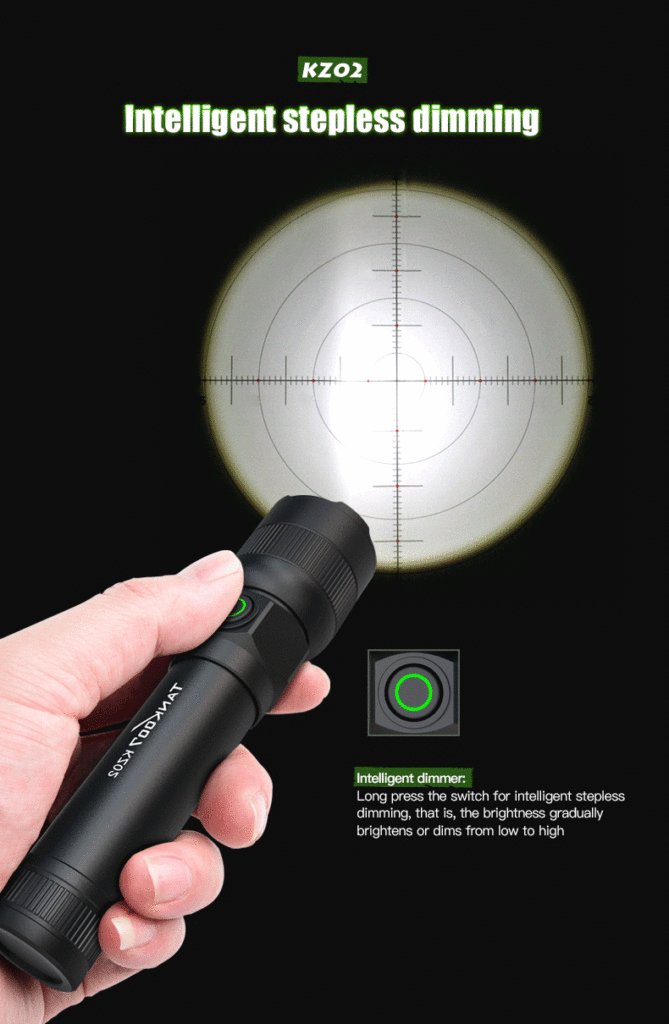How Many Lumens Are in Police Flashlights: A Comprehensive Guide
The importance of lumens in police flashlights cannot be overstated. Lumens measure the brightness of a flashlight, a critical factor in law enforcement where visibility can often spell the difference between safety and danger.
In the field, officers rely on their flashlights for a variety of tasks, from illuminating dark areas during patrols to assessing potential threats during traffic stops. As technology has advanced, modern police flashlights now boast impressive brightness levels that far exceed the standards of previous years, with many models offering outputs of 1000 lumens or more.
This comprehensive guide aims to explore the various lumen outputs of police flashlights, the features to consider when selecting one, and how these factors enhance officer safety and operational effectiveness during nighttime tasks.
Table of Contents
- Understanding Lumens in Flashlights
- Typical Lumen Outputs for Police Flashlights
- Advantages of High-Lumen Flashlights
- Factors to Consider When Choosing a Police Flashlight
- The Evolution of Police Flashlights
- Popular Models of Police Flashlights
- Comparing Police Flashlights and Regular Flashlights
- FAQ
- Conclusion
Understanding Lumens in Flashlights
Lumens are a unit of measurement that quantify the total amount of visible light emitted by a source. In the context of flashlights, higher lumen ratings indicate brighter lights.
For law enforcement, this brightness is crucial as it directly impacts the visibility and safety of officers in low-light scenarios. A flashlight with higher lumens can illuminate greater distances and wider areas, making it easier to assess situations quickly and accurately in the dark.
What Are Lumens?
Lumens measure the total amount of light that a flashlight emits in all directions. It’s important to distinguish this from other measures of light, such as candela, which refers to the intensity of light in a specific direction.
For police work, the total lumen output is more relevant because officers often require broad illumination to scan their surroundings effectively.
How Lumens Affect Visibility
The visibility provided by a flashlight directly correlates with its lumen output. For example, a flashlight with 1000 lumens can illuminate a wide area effectively, making it easier to spot potential threats or gather evidence.
In darker environments, such as alleys or during nighttime operations, higher lumens can prevent surprises that might compromise an officer’s safety.
Common Misconceptions About Lumens
A common misconception is that more lumens always equate to better performance. While higher lumens do increase brightness, they can also lead to shorter battery life and increased heat generation.
Thus, the best flashlight is not solely determined by lumen count but also by design, battery type, and intended use.
| Flashlight Type | Lumen Output |
|---|---|
| Standard Duty Flashlight | 100-500 Lumens |
| High-Performance Flashlight | 500-2000 Lumens |
| Extreme Tactical Flashlight | 2000+ Lumens |
The table above illustrates the varying lumen outputs across different flashlight categories. Standard duty flashlights typically range between 100 and 500 lumens, suitable for basic tasks.
High-performance flashlights, often used in police work, range from 500 to 2000 lumens, providing ample brightness for most scenarios. Extreme tactical flashlights exceed 2000 lumens, offering intense brightness for specialized operations.
Understanding these categories helps officers make informed decisions based on their operational needs.
Typical Lumen Outputs for Police Flashlights
Police flashlights come in varying lumen outputs depending on their intended use and design specifications. From lower-end models to high-performance units, the range of lumen outputs is vast and can be categorized into three primary groups: low-end, mid-range, and high-end flashlights.
Low-End Flashlights (100-500 Lumens)
Low-end flashlights typically range from 100 to 500 lumens. These flashlights are often used for general purposes, such as walking a beat, checking in on areas, or basic visibility tasks.
While they provide sufficient light for many everyday needs, they may not offer the necessary brightness for high-stress situations or detailed searches.
Mid-Range Flashlights (500-1000 Lumens)
Mid-range flashlights, generally between 500 and 1000 lumens, are the most commonly used by law enforcement officers. They offer a balance between brightness and battery efficiency, making them suitable for a variety of operations, from traffic stops to investigating suspicious activities at night.
Their ability to illuminate larger areas while maintaining decent battery life makes them a popular choice among officers.
High-End Flashlights (1000+ Lumens)
High-end flashlights exceed 1000 lumens and are designed for tactical situations where maximum visibility is essential. Officers may rely on these powerful lights during high-risk operations, searches, or when dealing with potentially dangerous encounters.
The intense light output helps in illuminating dark environments, providing a tactical advantage during critical moments.
| Flashlight Model | Lumen Output | Features |
|---|---|---|
| Streamlight ProTac HL | 600 Lumens | Compact, Rugged Design |
| Fenix TK35UE | 5000 Lumens | Multiple Brightness Modes |
| Olight Warrior Mini 2 | 1750 Lumens | Rechargeable, Compact |
The data presented in the table illustrates the lumen outputs of popular police flashlights. The Streamlight ProTac HL, at 600 lumens, is ideal for general use with its compact and rugged design, suitable for daily patrols.
The Fenix TK35UE stands out with its impressive 5000 lumens, offering multiple brightness modes for various tactical scenarios. Meanwhile, the Olight Warrior Mini 2 provides a balance of high lumen output and compact size, making it a versatile choice for officers on the go.
These examples highlight the variety of flashlight options available to law enforcement, each tailored to specific needs.
Advantages of High-Lumen Flashlights
High-lumen flashlights provide numerous advantages in law enforcement settings. Their intense brightness not only enhances visibility but also contributes to officer safety and effectiveness during nighttime operations.
Understanding these benefits can help officers make informed choices about the tools they carry.
Enhanced Visibility in Low-Light Situations
One of the primary benefits of high-lumen flashlights is their ability to illuminate dark environments effectively. This enhanced visibility allows officers to assess situations quickly, spot potential threats, and gather evidence without hesitation.
In many cases, the ability to see clearly in low-light conditions can be crucial for an officer’s safety and situational awareness.
Tactical Advantages During Traffic Stops
High-lumen flashlights can be strategically used during traffic stops to illuminate the interior of a vehicle. For example, a 500-lumen light can effectively penetrate tinted windows, enabling officers to identify occupants and any potential threats before approaching the vehicle.
This proactive approach can enhance officer safety significantly.
Psychological Impact on Suspects
The mere presence of a high-lumen flashlight can have a psychological effect on suspects. Bright lights can disorient individuals, giving officers a tactical advantage during confrontations.
By overwhelming suspects with light, officers can gain control of a situation without resorting to physical force, thus de-escalating potential conflicts.
| Benefit | Description |
|---|---|
| Increased Visibility | Allows officers to see and assess situations in low-light conditions. |
| Tactical Advantage | Helps illuminate interiors of vehicles during traffic stops. |
| Psychological Deterrent | Can disorient suspects and provide officers with a tactical edge. |
The benefits highlighted in the table illustrate the advantages of high-lumen flashlights in law enforcement operations. Increased visibility is crucial for effective situational assessment, allowing officers to act confidently in dark environments.
The tactical advantage gained during traffic stops can enhance safety, while the psychological deterrent effect can help de-escalate potentially violent encounters. As a result, high-lumen flashlights serve as essential tools that can improve officer safety and operational effectiveness during nighttime incidents.
Factors to Consider When Choosing a Police Flashlight
Selecting the right police flashlight involves consideration of several critical factors. These factors can influence the flashlight’s performance and suitability for specific law enforcement tasks.
Battery Life and Type
Battery life is essential for ensuring that a flashlight can sustain its output during critical operations. Flashlights should ideally have a long runtime, with at least 30 minutes on high settings and several hours on lower settings.
Lithium-ion batteries are becoming the standard due to their efficiency and longer lifespan, making them preferable for law enforcement applications.
Durability and Weather Resistance
Durability is paramount for police flashlights, which must withstand harsh conditions and potential impacts. Look for flashlights made of high-quality materials, such as aircraft-grade aluminum, which offer resistance to drops and impacts.
Additionally, a flashlight should have an IP rating of at least IPX4 for water resistance to ensure reliable performance in varied weather conditions.
Additional Features (e.g., Strobe Mode, Adjustable Focus)
Many modern police flashlights come equipped with additional features that enhance their functionality. Strobe modes can be effective in disorienting suspects, while adjustable focus allows officers to switch between floodlight and spotlight modes, catering to different operational needs.
These features can significantly improve an officer’s tactical capabilities.
| Feature | Importance |
|---|---|
| Battery Life | Ensures reliable performance during extended use. |
| Durability | Withstands rough handling and environmental challenges. |
| Weather Resistance | Operates effectively in various weather conditions. |
| Special Features | Enhances versatility and effectiveness in the field. |
The table summarizes the critical features to look for when selecting a police flashlight. Battery life is vital for ensuring that the flashlight can be relied upon during critical situations without interruption.
Durability and weather resistance are equally important, as they allow the flashlight to withstand the rigors of law enforcement duties in various environments. Special features, such as strobe modes and adjustable focus, significantly enhance the flashlight’s versatility, making it a more valuable tool for officers in the field.
By considering these factors, law enforcement personnel can select a flashlight that meets their operational needs effectively.
The Evolution of Police Flashlights
The technology behind police flashlights has evolved remarkably over the years, reflecting advancements in lighting technology and materials. Understanding this evolution can provide insights into what makes modern police flashlights essential tools for officers today.
Early Flashlight Technology
Traditional flashlights were primarily powered by incandescent bulbs, which were limited in brightness and efficiency. The typical flashlight of the past offered a modest lumen output, often below 100 lumens.
These flashlights were bulky, less durable, and required frequent battery replacements, making them less practical for law enforcement use.
Transition to LED
The introduction of LED technology revolutionized flashlights, providing brighter and more efficient lighting solutions. LEDs produce light more effectively, resulting in higher lumen outputs without the excessive heat generated by incandescent bulbs.
Today, many police flashlights utilize LED technology, offering outputs that can exceed 2000 lumens while maintaining longer runtimes and better durability.
Current Trends in Flashlight Technology
Today’s police flashlights incorporate advanced features such as rechargeable batteries, multiple brightness settings, and tactical designs for enhanced usability. Some models even offer smart technology, allowing officers to program specific lighting modes for different scenarios.
The focus on user-friendly designs and robust materials ensures that modern flashlights are not only powerful but also reliable tools that meet the demanding needs of law enforcement.
| Era | Technology | Lumen Output |
|---|---|---|
| Early 20th Century | Incandescent | 50-100 Lumens |
| 2000s | Halogen | 100-300 Lumens |
| 2010s-Present | LED | 500-2000+ Lumens |
The evolution table highlights the significant technological advancements in police flashlights over the years. The early 20th-century flashlights, powered by incandescent bulbs, provided minimal brightness, making them inadequate for modern law enforcement needs.
The transition to halogen bulbs in the 2000s improved brightness and efficiency but still fell short of the capabilities offered by today’s LED technology. Modern LED flashlights now offer impressive lumen outputs, with many exceeding 2000 lumens, significantly enhancing officers’ visibility and operational effectiveness.
This evolution underscores the importance of adopting advanced technology to meet the challenges faced in law enforcement today.
Popular Models of Police Flashlights
With numerous models available in the market, certain police flashlights have gained recognition for their performance, durability, and features. Below are some of the most popular models that are commonly used by law enforcement personnel.
Streamlight ProTac HL
The Streamlight ProTac HL is known for its compact design and high lumen output of 600 lumens. This flashlight is ideal for everyday carry, thanks to its lightweight construction and rugged build.
It features multiple modes, including strobe, making it versatile for various law enforcement scenarios.
Fenix TK35UE
With an impressive 5000 lumens, the Fenix TK35UE stands out for its brightness and long-range capabilities. This flashlight is designed for tactical applications and offers multiple brightness settings, including a strobe mode.
Its durable construction ensures it can withstand the rigors of police work.
Olight Warrior Mini 2
The Olight Warrior Mini 2 is a compact and powerful flashlight, providing a maximum output of 1750 lumens. Its user-friendly design includes a dual-switch system for easy access to various modes, including strobe.
This flashlight is rechargeable and built with durability in mind, making it an excellent choice for law enforcement.
| Model | Lumen Output | Features |
|---|---|---|
| Streamlight ProTac HL | 600 Lumens | Compact, Multiple Modes |
| Fenix TK35UE | 5000 Lumens | Long Range, Durable |
| Olight Warrior Mini 2 | 1750 Lumens | Rechargeable, Dual-Switch |
The table above summarizes the key specifications of popular police flashlight models. The Streamlight ProTac HL, with its 600 lumens, is ideal for officers seeking a lightweight and compact flashlight.
The Fenix TK35UE, known for its exceptional brightness, is suitable for tactical operations requiring extensive illumination. Meanwhile, the Olight Warrior Mini 2 balances high lumen output and portability, making it a favorite among law enforcement personnel.
These models exemplify the range of options available to police officers, each designed to meet specific operational needs effectively.
Comparing Police Flashlights and Regular Flashlights
Understanding the differences between police flashlights and regular consumer flashlights is critical for law enforcement professionals. While both serve the basic function of providing light, police flashlights are designed with unique features that enhance their performance in high-pressure situations.
Brightness Comparison
Police flashlights typically have higher lumen outputs than regular flashlights. While consumer models often range from 100 to 500 lumens, police flashlights frequently exceed 1000 lumens, allowing for better visibility in low-light conditions.
This increased brightness is essential for tasks like identifying threats and illuminating large areas quickly.
Durability and Design Differences
Durability is another key difference. Police flashlights are constructed from robust materials, such as aircraft-grade aluminum, and are often impact and water-resistant.
In contrast, regular flashlights may be made from lower-quality materials that do not withstand harsh conditions, making them less reliable for law enforcement tasks.
Tactical Features vs. Standard Features
Many police flashlights come equipped with tactical features, such as strobe modes for disorienting suspects or adjustable focus for different lighting needs. Regular flashlights, however, usually lack these specialized functionalities, limiting their effectiveness in critical situations.
This distinction emphasizes the importance of using the right tools for law enforcement.
| Feature | Police Flashlights | Regular Flashlights |
|---|---|---|
| Lumen Output | Typically 1000+ Lumens | 100-500 Lumens |
| Durability | High-Quality, Impact Resistant | Lower-Quality, Less Durable |
| Tactical Features | Strobe, Adjustable Focus | Basic Functions Only |
The comparison table above highlights the key differences between police flashlights and regular flashlights. Police flashlights are designed for maximum brightness, often exceeding 1000 lumens, which is crucial for visibility during law enforcement operations.
Their durable construction ensures that they can withstand the demands of police work, while tactical features such as strobe modes provide additional advantages in confrontational situations. In contrast, regular flashlights, with their lower lumen outputs and basic functionalities, may not meet the rigorous requirements of law enforcement tasks.
This comparison illustrates the necessity for officers to utilize specialized flashlights for their safety and effectiveness.
FAQ
How many lumens do police flashlights typically have?
Police flashlights typically range from 1000 to over 5000 lumens, depending on the specific model and its intended use. Lower-end models may provide around 600 lumens, while high-performance flashlights can exceed 5000 lumens.
The choice of lumen output often reflects the operational demands of law enforcement tasks, ensuring that officers have adequate visibility in various conditions.
What is the best lumen output for a police flashlight?
The best lumen output for a police flashlight generally falls between 1000 and 2000 lumens. This range provides sufficient brightness for most law enforcement scenarios while maintaining a manageable battery life.
Higher outputs, like those above 2000 lumens, are beneficial for specific tactical situations where maximum visibility is required, but they may also drain the battery more quickly.
Are higher lumens always better for police work?
While higher lumens can offer increased brightness and visibility, they are not always better for police work. Excessive brightness can lead to glare, making it difficult for officers to see their surroundings accurately.
Additionally, higher-lumen flashlights often have shorter battery life. Therefore, it’s essential to balance lumen output with practical usability for specific tasks in law enforcement.
How do battery types affect the performance of police flashlights?
Battery types significantly affect the performance of police flashlights. Lithium-ion batteries are preferred due to their longer lifespans and higher energy density, allowing for greater lumen outputs without frequent replacements.
In contrast, alkaline batteries may not provide the same level of performance, particularly in high-drain flashlights. Thus, selecting the right battery type is crucial for maintaining optimal flashlight functionality during operations.
What are the advantages of LED flashlights over incandescent ones in law enforcement?
LED flashlights have several advantages over incandescent models in law enforcement. They are more energy-efficient, produce brighter light with less heat, and have longer lifespans.
LEDs also provide directional lighting, enhancing visibility in specific areas. This efficiency and reliability make LED flashlights a preferred choice for law enforcement, ensuring that officers have dependable illumination during critical situations.
Conclusion
Understanding the importance of lumens in selecting police flashlights is essential for enhancing officer safety and effectiveness during nighttime operations. The advancements in flashlight technology have led to powerful and efficient models that significantly improve visibility and operational capabilities.
When choosing a flashlight, factors such as lumen output, battery life, durability, and additional features should be considered to meet the specific needs of law enforcement personnel. By staying informed about these factors and the latest developments in flashlight technology, officers can select the most suitable tools for their important work.







